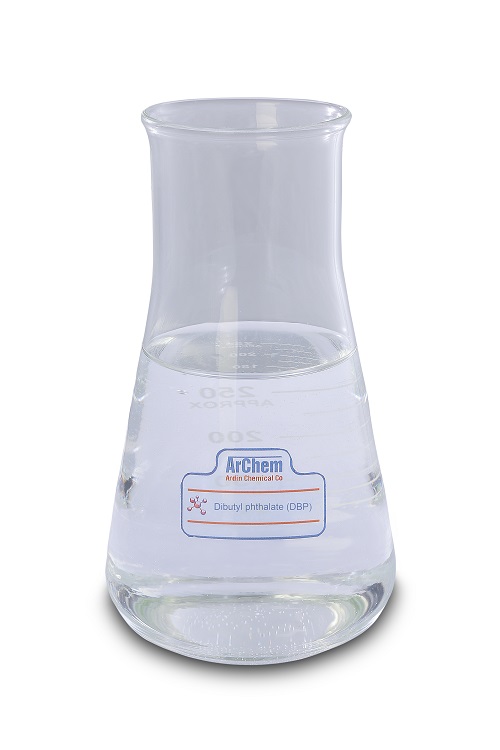Dibutyl Phthalate (DBP) is a colorless oily liquid extensively used as a plasticizer. This product is used in elastomers, lacquers, printing inks, resin solvents, paper coatings, adhesives, and nail polish.
ArChem provides Dibutyl Phthalate and other plasticizers such as Diisobutyl Phthalate (DIBP), Dioctyl Adipate (DOA), and Acetyl triethyl citrate (ATEC) for various industrial applications. Additionally, ArChem provides customers with other chemical products including Nitrocellulose, Nitrocellulose solution, organic solvents, etc. for further information please get in touch with our technical sales team in ArChem.

ArChem Dibutyl Phthalate (DBP) (also known as Di-n-butyl phthalate, n-Butyl phthalate, and Butyl phthalate) is an organic compound With the chemical formula C6H4(COOC4H9)2. DBP belongs to a family of chemicals called phthalates, which are added to some plastics to make them flexible.
ArChem DBP is soluble in most organic solvents such as in alcohol, ether, and benzene, but almost insoluble in water.
ArChem Dibutyl Phthalate (DBP) is used as an additive to adhesives or printing inks. The chemical and physical properties of DBP are listed below:
| Molecular Formula | C16H22O4 |
| IUPAC name | dibutyl benzene-1,2-dicarboxylate |
| Cas Number | 84-74-2 |
| Molecular weight | 278.34 g/mol |
| Density | 1.043 g/mL |
| Boiling Point | 340 °C |
| Flashpoint | 157 °C |
| Melting Point | -35 °C |
| Flammability | May be combustible at high temperature. |
ArChem DBP can be used as a plasticizer in nitrocellulose lacquers, elastomers, explosives, nail polish, etc. Plus, it is used as a solvent for perfume oil and resins. Some of ArChem Dibutyl Phthalate uses include:
Dibutyl Phthalate is produced by the reaction of n-butanol with phthalic anhydride. ArChem DBP is compatible with other monomeric plasticizers which are commonly used in PVC, and since it is too volatile, it is used in combination with them as a gelling aid.
Storage conditions of ArChem DBP are listed below:
Inhalation exposure to dibutyl phthalate may include irritation of the eyes, nose, and throat. It may cause nausea, tearing of the eyes, vomiting, dizziness, and headache. Long-term exposures may cause liver and kidney damage. Some of the necessary first-aid measures are described below:
Operators should Avoid breathing mist, gas, or vapors. they should use personal protective equipment and wear chemical impermeable gloves when handling dibutyl phthalate (DBP) to avoid contact with the body, skin, and eyes.
In ArChem, we provide our customers with different types of plasticizers for various industries. Our products are produced to the highest quality, with all analytical measurements performed under international standards.
Please contact us for a price quote, to request detailed product information and specifications, or to have a sales representative call or visit.
Dibutyl phthalate primarily is used as a plasticizer in plastics such as PVC. Additionally, DBP is used in adhesives, printing inks, construction coatings, and sealants.
Other names of dibutyl phthalate are DBP, Di-n-Butyl Phthalate, n-Butyl phthalate, 1,2-Benzenedicarboxylic acid dibutyl ester, and Phthalic acid dibutyl ester.
ArChem plasticizers can be purchased in a variety of volumes. Depending on your orders, Prices are different. for more information, please get in touch with our technical sales team in ArChem.
DBP is not toxic, but long-term exposures may cause liver and kidney damage.
The CAS number of dibutyl phthalate (DBP) is 84-74-2
The HS code of dibutyl phthalate (DBP) is 29173910